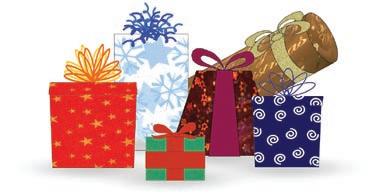




Managing/Online/Print
Ben Fitch/Valerie Caviglia/ Nicole Stejskal
Argo Editor
Regina Budden
Assistant Editor
Leia Karimul Bashar
Copy Editor
Josh King
Page Design
Leia Karimul Bashar, Regina Marie Budden, Mikki Burcher, Rob Burkett, Ben Fitch
Advertising Manager
Angie Marquart
Photo Editor
Matt Wilper
Photos
Mikki Burcher, Tesa DeForest, Matt Wilper
Faculty Adviser
Regina Cassell
Writers
Brian Allen, Mikki Burcher, Robert Burkett, Kate Fechter-Stamper, Ashley Nadeau, Meghan Ryan, Matt Wilper
This Argo is full of holiday cheer, and any astute observer will see that it follows the theme of the carol “The 12 Days of Christmas,” since there are 12 pages in the Argo. This theme reaches its pinnacle on pages 6 and 7, where one can see the 12 days of Topeka.
The Argo is a monthly insert published by the staff of the Washburn Review for coverage of Arts & Entertainment. To get in touch with the Washburn Review newsroom, please call (785) 670-2506 or e-mail at theargo@washburnreview.org. We welcome letters to the editor. Please send them in e-mail format to regina.budden@washburn.edu.
© The Argo
Copyright 2009

A feature and info graphic on origins and traditions bring a fresh perspective to this winter holiday
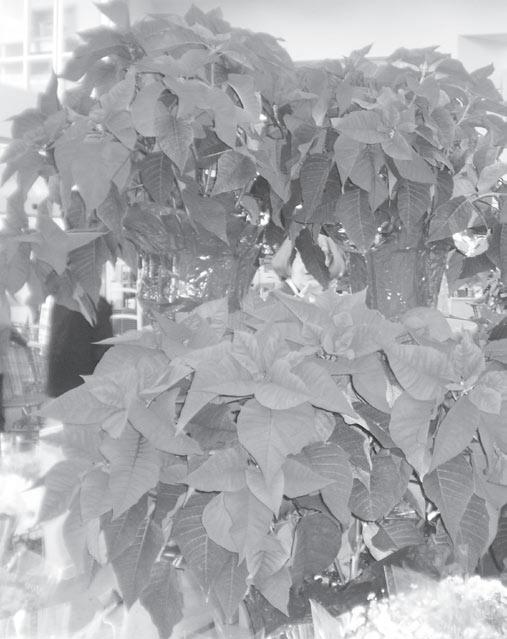
The twelve days of Christmas take a local twist with the colorful photos. Feel free to sing along!

This full-page feature covers the holiday of Kwanzaa and the meaning of its many cultural symbols
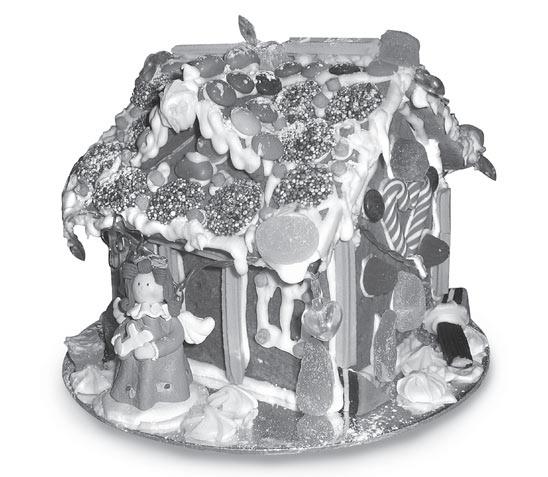

Just kidding. I’m really tired of hearing about the recession. Time for some happiness.
Christmas is coming, the goose is getting fat, please put a penny in the old man’s hat... The old Christmas nursery rhyme reminds us of the charity of the Holiday season. I actually searched online to find the origins of this song so I could impart a bit of knowledge to my many dedicated readers (just kidding: I’m pretty sure that only my brother actually reads this column). Unfortunately, even Wikipedia has almost nothing to say about it. Not that Wikipedia is a creditable source.
The origins of the song are not the important part. Instead, the message that it conveys is what makes this classic, well... Classic?
OK. Bottom line: the winter holiday season is the time of year when people are most likely to dig into their pockets and give to those less fortunate. There are many festive movies and such that tell us how we should make Christmas and the season of giving last the whole year round.
But what about the cranky lady at Wal-mart who cut in front of me just to stop me from buying the last Prince Ken
Musketeer? Not that my brother-in-law really wanted me to buy his son a Barbie product, but still. It was rude. Do I really want that kind of attitude to follow my shopping experience every month?
A common discussion in the office the past month was “Is Christmas a secular holiday?” I am on the “No” side myself, but the “Yes” side has a good argument when it comes to the consumerist attitude of many shoppers this time of year.
I’m not saying that I’m converting to believing that Christmas is just about presents and Santa and stuff. I would just like to express my small words of warning to holiday shoppers: WATCH YOURSELVES. It’s a bit of a contradiction to uncharitably smash a poor college student in your rush to buy a gift for someone.
Even if Santa isn’t keeping track of the naughty and nice this year, beware of Christmas Karma: someone may want to feed you some of your own “seasonal cheer.”*
way endorses any untoward or mean-spirited spreading of seasonal cheer.
Valerie Caviglia ONLINE EDITOR-IN-CHIEF
It is amazing what one experience can do to change your entire life. Something this significant happened on Christmas day when I was 10 years old.

My parents decided we would work for Meals on Wheels that day. At first, I was afraid to ring the doorbells of strangers. But with each and every home we visited, people greeted us warmly, with joy in their eyes and an embracing hug. I felt so good inside. What we were doing was more than providing a meal. We were filling a void. Most of the wonderful people we met that day were spending the holiday alone with no one to share it with or anyone to visit. And as good as I felt when the door opened, I found myself filled with intense sadness when the door closed. They were alone again.
Josh Rouse SPORTS EDITOR, ASSISTANT ONLINE EDITOR

Perhaps the most challenging thing in the world for me is to pick a favorite Christmas memory.
I was blessed with some of the greatest grandparents in the world, quite literally, and they always made Christmas a special time for their grandchildren. It wasn’t about the presents, although both sets of grandparents went all out during Christmas time. I’m not ashamed to admit I’m a bit spoiled by them… OK, very spoiled by them.
The best memories I have usually revolve around seeing my cousins and grandparents. My Grandpa Rouse, before he died, used to get us all gag gifts, and we often returned the favor. Between giving him Barbie dolls and ugly troll statues and getting “Reindeer Poop” in return, we always had a fun time during the holidays.
That night, when we sat at the movies together, I felt so safe and warm because I had my family surrounding me. I have always held on to that feeling. I will forever remember how important it is to cherish the moments I have with them, especially at the holidays.
Eric Smith ASSISTANT SPORTS EDITOR

A favorite holiday memory of mine would have to be going to my grandparents’ house every year since I can remember on Christmas Eve.
Family from both Colorado and North Carolina come and we all eat way too much and exchange gifts.
When my brother and I were younger, we would always want to stay up all night with our cousins, but we’d have to go home so we could wake up and go to church after opening gifts from Santa Claus. Overall, the Christmas holiday with my family is one of the best times of the year.
Nicole Stejskal PRINT EDITOR-IN-CHIEF

Robert Burkett OPINION EDITOR
As a child, I recall one of the first traditions of Christmas that my family would always celebrate was the ornament tree.
It seems like such a simple thing now, but that piece of cloth with its 24 pouches at the bottom each holding one of those ornaments was the highlight of the month. Every day I came home from school with
the anticipation of putting up the next ornament.
Everyone in the house would also use the ornament hanging as a chance to come together and talk about our day and share the feeling that one has of community and family during the holidays. That’s the tradition that has always stuck with me no matter how old I get.


Mikki Burcher NEWS EDITOR
Black Friday holds no appeal to my family. Wading through masses of people and waiting an hour to get to a register just seems anti-holiday, so this year my family stayed home and put up Christmas lights the Friday after Thanksgiving. When I was younger, I enjoyed putting up lights because it made our home look like a magical sparkling gingerbread house. Plus, I got to climb on the roof. But as I got older, I realized that my family’s Christmas lights gave us much more than a beautifully lit house. A tradition had
been formed and family bonding time had ensued. After two years of having an outrageous energy-sucking light display, people began to ask when we would be decorating or tell us how much they were looking forward to seeing the newest addition to the nativity. And I realized that something we were doing because it made us happy was making others just as happy… and that truly is the essence of the season! So now, I enjoy putting up Christmas lights not only because they are just absolutely beautiful, but because it is a family tradition that gives happiness to others.
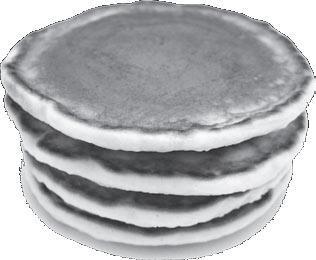
My favorite tradition during the holidays is Christmas Eve dinner with the Stejskal side of the family. Rather than enjoying the traditional ham and potatoes meal, our family chooses to indulge in a less-thanconventional combination: catfish and pancakes. The tradition originally began in our family when my grandpa was a boy. For my great-grandparents, living on a farm and supporting a family with seven children meant that they didn’t have a lot of money, so they used their resources to the best of their ability. Using milk from the cows, eggs from the chickens, and flour from the wheat they produced, my great-grandma made the pancakes, while my great-grandpa fried the catfish caught from the pond on their land. This meal, enjoyed only on Christmas Eve, was a very important family tradition for my grandpa, so we still continue to honor it today.
O tannenbaum! O tannenbaum!
Lauren Eckert ASSISTANT NEWS EDITOR
A lot of tradition accompanies the Christmas holiday, but one of the most important traditions in my family is picking out the tree. The Christmas tree is the center of the festivities, so it is vital that it looks and smells exceptional. I am proud to say that in my 20 years of life, I have never had an artificial tree.
Every year, the weekend after Thanksgiving, my family and I trek out to the Christmas tree farm to peruse the rows, looking for a tree with a sturdy trunk, no major holes and full, voluminous branches. We sought a fresh, green evergreen that smelled like pine and stretched to the ceiling. We would then flag down the man with the chainsaw, hack it down and secure it atop our
mini-van for the journey home. Then it was time to shake it out, set it up, and decorate it with lights, bobbles and home-made ornaments that marked the years of our childhood. While this tradition has faded with time, I can’t help but smile and reminisce every time I get a whiff of pine.


Robert Burkett WASHBURN REVIEW
Each year as winter descends upon the community [and lights begin to shine out the season,] people of faith begin the process anew of celebrating Christmas.
However, Christmas has not always been a time of cheer and celebration. Some historians trace the roots of Christmas back to the preChristian days of the Persian and Roman empires, in which some of today’s traditions originated, such as the Christmas tree (which descends from a Roman tradition at its roots), and the idea of a large feast on Christmas, which is traced back to pre-Christian Scandinavian roots as well.
been passed down through the generations and have taken form from sacred ceremonies have become more accessible to the public than ever before.
In the case of First Southern Baptist Church of Topeka, located near 19th and Gage, many of the church’s traditions revolve around the story of the birth of Christ, who is embraced as part of the holy trinity of God the Father, God the Son and God the Holy Spirit. They represent this through a candlelight service.
Pope John Paul II “ ”
The Christmas tree is an ancient custom that exalts the value of life, because the evergreen tree remains unchanged through the harshness of winter.
The colorful history of Christmas went well into the modern age under the Puritan movement of the Reformation in the 19th century, which actually condemned the celebration of Christmas and banned it in parts of New England at one point, where it wasn’t considered to be acceptable practice even after the ban was lifted up until the mid-to-late 1800s.
Today, however, traditions that have
“We come together as a congregation to raise up the light of our savior on Christmas Eve,” said Clark Johnson, senior pastor at the church
Many other denominations celebrate in similarly traditional ways of worship. For example, the Methodist tradition is the “hanging of the greens,” which dates back as far as the pre-Christian days of the Roman empire. The hanging of the greens has continued through the centuries, eventually turning into what Methodists and most other denominations of Christianity do in hanging branches of trees as well as is more commonly practiced in the decoration of a Christmas tree.
“We enjoy the warmth and the community that hanging the greens brings
The Christmas tree found its roots in the days of the Roman empire. According to historians, Roman citizens would decorate their homes with the branches of trees as a celebration of the festival of Saturnalia.
In what is now northern Germany, towns would erect trees in town halls as a celebratory item for the children of the community. Today the tree is a well-recognized symbol of Christmas, and it is decorated with treats and other items much as they did back in the past for the benefit of children celebrating the season.


to our church,” said Loretta Ross, assistant pastor at Crestview United Methodist church.
Catholic traditions, while similar to many of the protestant denominations in some regards, are unique in other ways. This is illustrated in events such as St. Nicholas Day, celebrated on Dec. 6 every year. It is a highlight of the Advent season. Each child puts out a shoe the night before St. Nicholas Day in the hope that the kind bishop — with his miter, staff and bag of gifts — will pay a visit. The current “Santa Claus” is modeled after St. Nicholas, but commercialism has tarnished the true story. Many families give gifts on both Dec. 6 as well as Christmas.
While no one from the local Catholic community could be reached for interview prior to this article going to deadline, this writer felt it appropriate to let one of the more notable pontiff’s of the Catholic church speak in this article in reference to
Tree Star
The star on top of Christmas trees is sometimes shared with an angel placed on top as well. Both symbols are a reference to the star of Bethlehem that led the three wise men to the stable in the story of the birth of Jesus.
Today the star is considered the traditional piece to place atop a Christmas tree, tying the Roman pagan origins of the tree into the Christian traditions with which it is now associated.
another of the traditions of the Catholic faith:
“The Christmas tree is an ancient custom that exalts the value of life, because the evergreen tree remains unchanged through the harshness of winter. When gifts are arranged under the tree, it becomes a symbol of the tree of life, a figure of Christ, God’s greatest gift to all men,” said Pope John Paul II during his angelus audience Dec. 19, 2004.
Regardless of which denomination one belongs to, or where one goes for spiritual celebration this holiday, the season is just another historical touchstone in the time of year that marks the celebration of something like the birth of Christ for those that believe and embrace the message.
Robert Burkett is a junior mass media major. Reach him at robert.burkett@washburn.edu.

Mistletoe is a plant that has become associated with the tradition of Christmas that was first alluded to in the 18th century. According to custom, the mistletoe must not touch the ground between its cutting and its removal as the last of Christmas greens at Candlemas; it may remain hanging through the year, often to preserve the house from lightning or fire, until it is replaced the following Christmas Eve.
Today the mistletoe has a more amorous meaning in its tradition of requiring two people who meet under it to exchange a kiss.
Mikki Burcher WASHBURN REVIEW
Christmas is absolutely my favorite holiday. To be honest, Christmas is probably my favorite time of the entire year, and if I had my way, Thanksgiving through New Years would be a season all its own called “Awesomeness in Season Form.”
What? You don’t believe me? Let me illustrate.
Last year on a crisp snowy morning in early December, I walked out my front door to go to class and screamed bloody murder. Both of my roommates came running from their respective rooms to see who had shot at me, but were befuddled to find me jumping up and down and squealing something like “ChristmaslightslookChristmaslights!” They were not very pleased with me.
get it. The holidays can be a time-suck. But here’s the thing, it doesn’t have to be. And I alone hold the keys to unlocking a stress-free Christmas. Just read along and you’ll have a key-ring full of wisdom.
The first secret is: just say no.
Let’s practice. No, I will not buy your teacher a gift. No, I can’t attend your Christmas party. No, I can’t bring a covered dish to dinner. No, I’m not baking chocolate chip cookies. No, I am not sending a Christmas card to everyone in my address book. See how easy it is?
Because of my intense holiday spirit, it always baffles me that magazines and television have all these specials on how to “survive” the holidays. I mean I sort of float through the hot chocolate and cookies and lights, so the idea that it could actually be a hassle for some people just makes me crazy sad.
But I understand. There is a lot to do this time of the year. Shopping, budgeting, decorating, traveling, eggnogging, party-going, baking, wrapping presents, sending Christmas cards, working… I
But I will admit, saying no is a hard art to master. Sometimes you really want to say yes. When I am swimming in the I-don’tknow-what-to-say sea, I ask myself one simple little question: Will baking these ridiculously complicated oatmeal-cinnamon-raisin cookies or donating to this charity or sending Aunt Kiki a Christmas card make me happy? If the answer is yes, then do it.
The second key on your ring of success is to utilize your shopping skills.
Let me illustrate what I mean. Instant mashed potatoes. Frozen pies. Giftwrapping services. Gift bags. Gift cards. Pre-lit trees. Dollar-store decorations. And that’s just the beginning. Pick two or three things you really like to make during the holidays and get the rest from the store. No one can tell the difference between your Grandma’s hundred-year-
old gravy recipe and a jar from Heinz. Just buy pre-made and your stresso-meter will instantly go down five notches.
The third key to enjoying the season: appreciate the little things.
Hot chocolate. Snow flakes. Smiling rosycheeked children. The feel of a fire’s blaze against cold fingers. Sparkling lights. Christmas carols. Family. Friends. And yes, even presents, especially those of the home made variety.
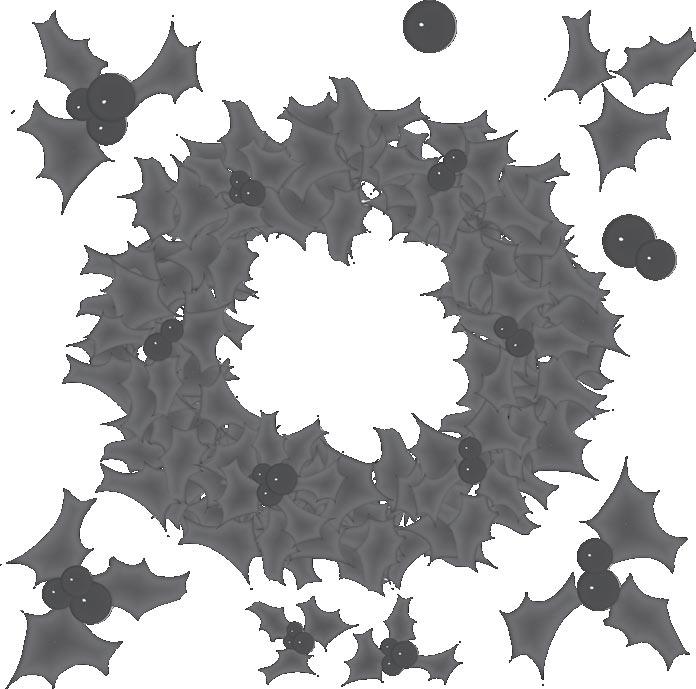
Feasting upon the plethora of small happiness-inducing morsels we are provided with on a day-to-day basis is more satisfying than waiting until Christmas day to stuff our senses. Take time to appreciate what makes the season so special!
The final key to achieving holiday greatness is the hardest to implement but the most efficient in taking the stress-ometer down to nilch. Just let it go.
So you didn’t get a present for your daughter’s best friend? Remember her birthday. You didn’t get all of the presents wrapped? You are saving the environment. You gained 15 pounds

from a binge-night of turkey and chocolatecovered pretzels? Good thing New Years is around the corner! The world isn’t going to end because you missed your boss’s dinner, and it certainly isn’t going to end because you only put out 35 decorations instead of your normal 40.
The point is, you’re only stressed because you let the stress get to you. So just find the silver lining, turn it to gold, and let the problems slide. If you use the three keys I’ve just handed, you will unlock the door to a relaxed and enjoyable holiday season. Just remember to practice your newfound skills of saying no, utilizing your shopping skills, enjoying the little things, and letting it go.
Matt Wilper WASHBURN REVIEW
This YouTube Pick of the Week is one that represents Washburn University. The question is, does it represent Washburn University in a good way?
the Macarena; nobody knows the words to that song.
The star of this little film is Phil Norris. He graduated from Washburn last year with a degree in anthropology. You might remember that he won Mr. Bod last year. In this clip he has climbed to the top of Kala Patar Mountain in Nepal, where he does the dance from the Michael Jackson “Thriller” video. I hope he didn’t go up this mountain just for this, because he might want to learn the song first. The only word he knows to this song is “thriller.” His version of the song is “Thriller thriller da da da thriller thriller da da da.” You should have done
So he messed up the song, what about his dancing skills? This didn’t help him out at all either. I think that the lack of oxygen has affected his brain because he thinks his dance moves are good. If he wants to see the Thriller done right, he needs to look up the Chinese Prisoners. That’s good dancing! Even the cross dresser has better moves. Only a mother could love his dance moves and singing. Maybe that’s the reason he gives a shout out to his mom at the end. Washburn might want to make it a requirement to know “Thriller” before graduating. We don’t want this to happen again. Till next semester, stay classy Washburn.


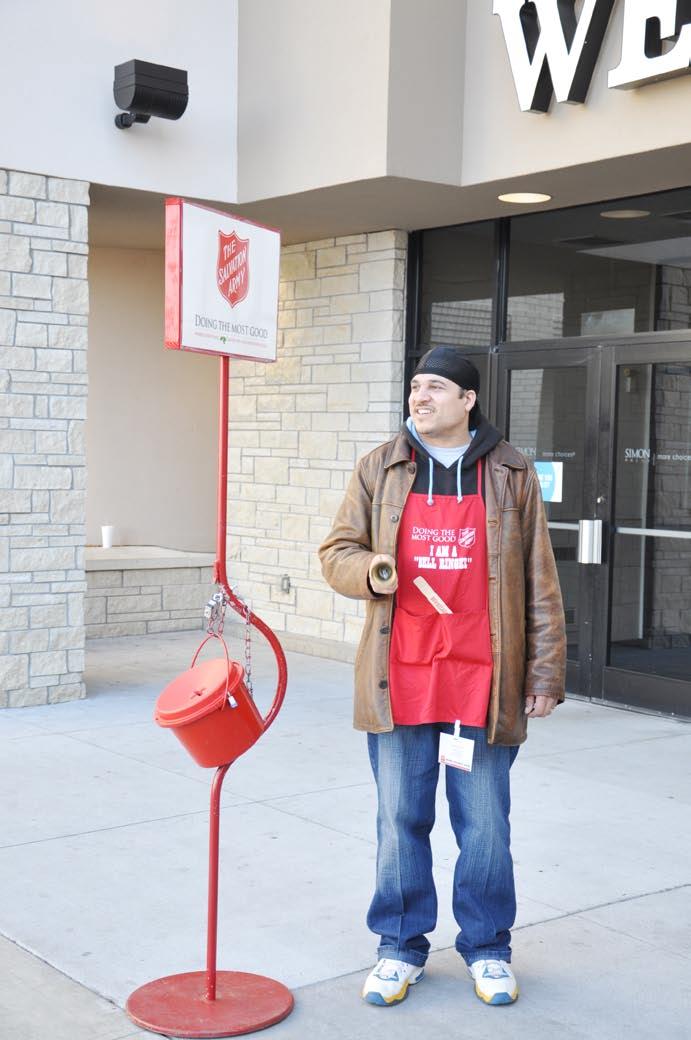
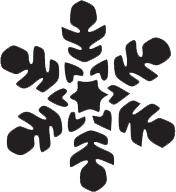

On the second day of Christmas, Topeka gave to me... two Ichabods playing jollily!


On the first day of Christmas, Topeka gave to me... a bell ringer to give my money!



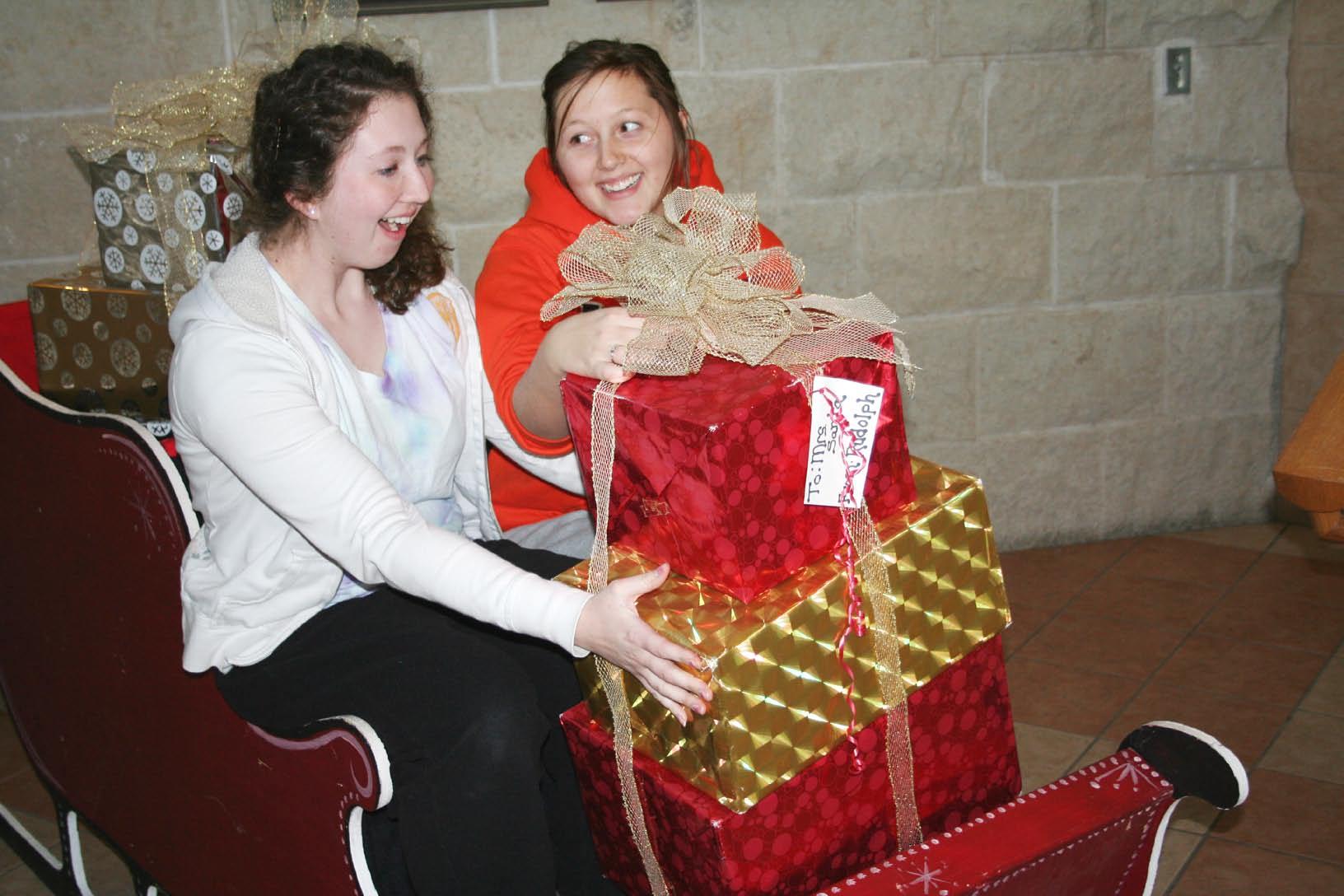

1 2 3
On the third day of Christmas, Topeka gave to me... three angels from the giving tree!

On the seventh day of Christmas, Topeka gave to me... seven poinsettas that were very pretty!

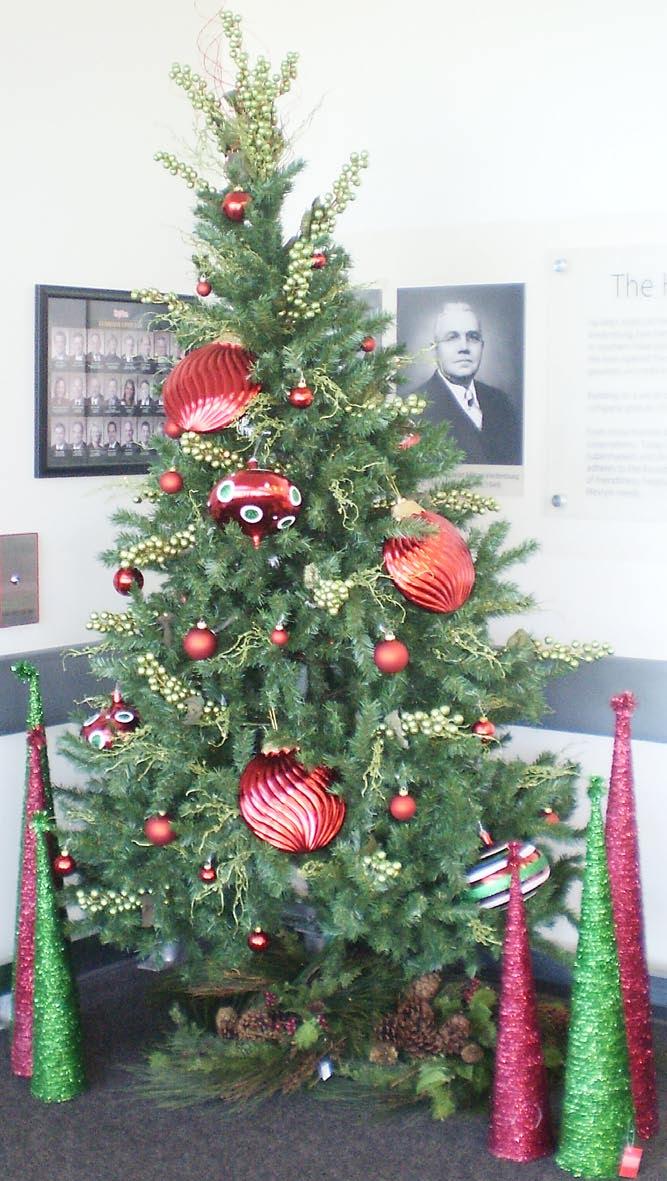

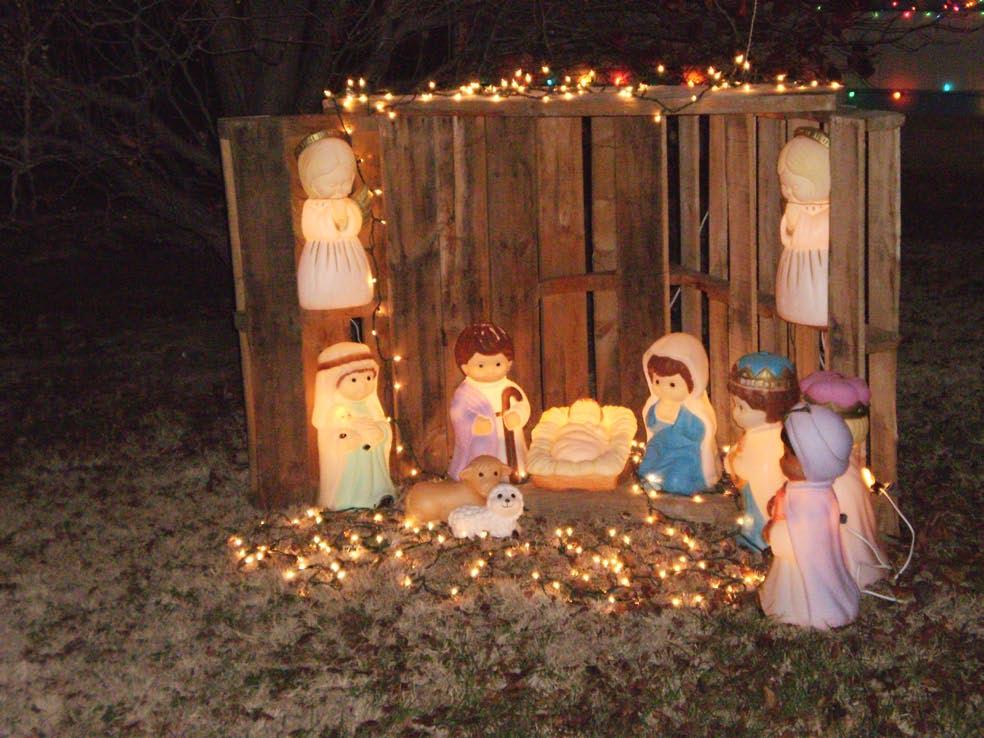
On the eighth day of Christmas, Topeka gave to me... eight jumbo ornaments on a tree!
On the tenth day of Christmas, Topeka gave to me... a way to help children be happy!

On the ninth day of Christmas, Topeka gave to me... nine figures in a nativity!





On the eleventh day of Christmas, Topeka gave to me... eleven living evergreens!





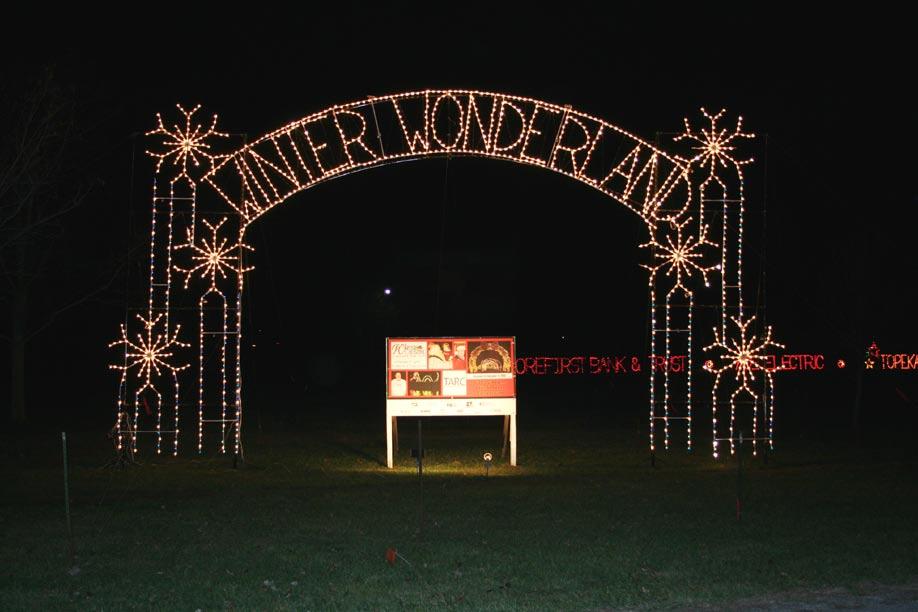
On the fourth day of Christmas, Topeka gave to me... four bells ringing hourly!

On the twelfth day of Christmas, Topeka gave to me... a house decorated beautifully!





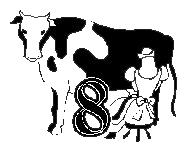

Brian Allen WASHBURN REVIEW
This year the Jewish Festival of Lights will begin with a candle lighting before sunset Friday, Dec. 11. The
The dreidel is top used in a children’s gambling game commonly played during Hanukkah. It’s function is similar to that of a dice, only it has four sides instead of six.
The game of dreidel came from the days of the Greek empire when it was illegal for Jews to study their religion. Jewish men began carrying dreidels to pretend that they were gambling together instead of studying Torah, because the punishment was death. Today, however, the stakes are not as high: usually little more than candy or coin.
idol-worshiping Syrian-Greeks in 165 BCE (before common era, the Hebrew equivalent of B.C.). Under pressure to adopt idol worship, they fought and won a prolonged guerilla campaign in Israel, evicting their enemies and restoring the Temple. According to the Talmud (text of Rabbinic teachings), after the Temple had been cleaned and the priests were ready to light the menorah, there was only one jug of the required pure olive oil fit to use. One jug should have only lasted one day, but it miraculously lasted eight, which is why Hanukkah lasts eight days. The menorah is lit to celebrate the victory and the miracle of lights.
onions, and flour, then fried crisp in vegetable oil. Sufganiyot are similar to jelly doughnuts. They are free formed and fried in hot oil, then covered in powdered sugar or cinnamon.
celebration begins on the 25th day of the Jewish month of Kislev. The spelling of Hanukkah has been changed to make it more phonetic in English. The more traditional spelling is “Chanukah.” The “ch” is a throaty guttural sound that does not exist in English.
Hanukkah celebrates the victory of the Jewish Maccabees against the

Traditionally, dreidels are made of wood, but it is common to find ones made of paper or metal. Some are family heirlooms and are intricately painted or carved. They serve as a reminder of the Hebrew heritage and past.
The lighting and prominent display of the Menorah is a public affirmation to the world that God makes miracles for those who stand up for truth and justice. It represents the defeat of darkness with light, one for each day of the miracle. The original Menorahs were made of clay with eight wicks fueled by sacred olive oil. Modern candelabra style menorahs have nine or seven branches. The middle one holds the candle that is used to light the rest. Electric Menorahs are allowed for decoration, but an oldfashioned one, oil or candle, is required to fulfill the Mitzvah, or commandment. Prayers and hymns accompany the lighting of the menorah.
The dreidel is a four-sided wooden top that was actually used for subterfuge during the time when Greek soldiers killed anyone studying the Torah. If soldiers approached a group of Jews studying the holy scripture, it was hidden and the top was produced to fool the soldiers into thinking that the men had gathered to gamble rather than study. There are four Hebrew letters on the sides of the top. When it stops spinning, the letter that lands face up indicates whether the player will win, lose, void or take half from the kitty. Today it is spun by children to play for coins and candy.
During Hanukkah it is customary to give gelt, or money, to children. The custom is based on the practice of giving candle money to the poor so that they may honor the Mitzvah. It is practiced today so that children may learn charity.
The last day of Hanukkah will be Friday, Dec. 18. Prayers will be recited and all eight lights of the menorah will be lit before sunset. Shalom.
Hanukkah is a family event where stories, food and playing with the dreidel follow the lighting ceremony. As a further reminder of the oil miracle the traditional foods are cooked in oil. Latkes are potato pancakes made from grated potatoes blended with eggs,
Possibly the most recognizable symbol of Hanukkah, the menorah is a traditional lamp used to light Jewish Temples. Menorahs are candelabras that have nine candles.
The menorah that is traditionally used in the Hanukkah celebration is actually called a Chanukah, and has nine candles. Each candle represents the eight nights of Hanukkah. The ninth candle, often the middle candle, is separated from the others as it is the “Shamash,” or “servant” candle. It is used to light the rest on the Chanukah.
The eight candles and eight nights of Hanukkah come from the eight nights
Brian Allen is a returning alumnus. Reach him at brian.allen@washburn.edu.

that a jug of oil lit the Temple’s menorah. This event is regarded as miraculous because the oil should have only lasted through one night.
Ashley Nadeau WASHBURN REVIEW
Kwanzaa is a holiday, celebrated by African Americans from Dec. 26 through Jan. 1. It is based on the agricultural “first fruits” celebrations of Africa. The holiday gets its name from the Swahili phrase matunda ya kwanza, which directly translates into fruits first in English. The first fruits celebrations are recorded in African history as far back as ancient Egypt, and continue to be celebrated today by many throughout the African continent.
Kwanzaa was created to “introduce and reinforce seven basic values of African culture which contribute to building and reinforcing family, community and culture among African American people as well as Africans throughout the world African community. These values are called the Nguzo Saba which in Swahili means the Seven Principles,” said Kwanzaa founder Dr. Maulana Karenga on the official Kwanzaa Web site.
Umoja, or Unity in English, is the first of Nguzo Saba. Followed with Kujichagulia, (self-determination) Ujima, (collective work and responsibility) Ujamaa, (cooperative economics), Nia, (purpose) Kuumba, (creativity) and Imani (faith).
Just as there are seven days, and seven principles, there are also seven symbols of Kwanzaa. These symbols are both traditional and non-traditional items that represent concepts which, “evolved out of the life and struggle of the African
American people,” said Karenga in his book, Kwanzaa: A Celebration of Family, Community and Culture.
These seven symbols are: mazao (the crops), mkeka (the mat), kinara (the candle holder), muhindi (the corn), mishumaa saba (the seven candles), kikombe cha umoja (the unity cup), and zawandi (the gifts). Those who celebrate Kwanzaa use each of these symbols as part of the festivities.
On the first day of Kwanzaa each year, the typical practice is to select a centrally located table and drape a piece of African cloth over it. Next, the mkeka is placed down on top of the cloth and all of the other symbols are placed on it or immediately next to it. The kinara is placed on the mat and the Mishumaa Saba, which represent both the seven principles and days of Kwanzaa are placed in the kinara. A candle is lit every day of the holiday to symbolize each of the Nguzo Saba.
Each day of Kwanzaa the family or group celebrating sit down, usually at meal times, and talk about the principle for that particular day. The family also participates in various cultural building activities based on these concepts.
One of the most important aspects during Kwanzaa is pouring the tambiko, or libation in honor of their African ancestors. Tambiko is performed by pouring a cup of water or juice over a large bowl of green leafy vegetables and reciting a tamshi la tambiko (libation statement), which was written by Karenga in honor of significant tasks begun by African ancestors.
Umoja night is another central
The seven symbols of Kwanzaa demonstrate the Nguzo Saba, which is Swahili for “Seven Principles.” These principles are indicative of the principles that African immigrants
Mkeka/Mat
Symbolizes the collective cultural experiences of the ancestors, which have been passed down through the generations

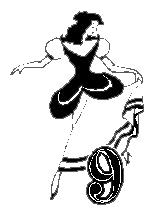

celebration of Kwanzaa. The celebration involves music, poetry, and community candle lighting. The Karamu, or feast is celebrated on Dec. 31 and “is a very special occasion because it is a community and cooperative project of ceremonies, tambiko, cultural expressions, and a magnificent feast of various foods prepared by all attending,” said Karenga in his book, Kwanzaa: a celebration of family, community and culture.
Locally, it seems those who celebrate Kwanzaa within the African American community are the minority. “I never really thought about celebrating
Kinara/Candleholder
brought from their native lands to America. The symbols help reinforce these principles which all AfricanAmerican parents hope to instill in their children.
Mazao/Fruit
Honors the fruits of labor and hard work, and leads Kwanzaa celebrants to appreciate their own labor and the labors of those around them

Represents the ancestors and the seven principles of Kwanzaa
Kikombe Cha Umoja/ Unity Cup
Symbolizes family and the unity of community and the trust of metaphorically “drinking from the same cup”

Kwanzaa,” said Topeka resident Chevas White. “It’s probably because I don’t really know much about it and wouldn’t know how to go about celebrating it.” Esoke, a local African dance and drum ensemble will perform traditional African dance and music as an expression to celebrate Kwanzaa, will perform at the Kansas City Library Monday, Dec. 21 at 7:00 p.m.
Ashley Nadeau is a junior mass media major. Reach her at ashley.nadeau@ washburn.edu.
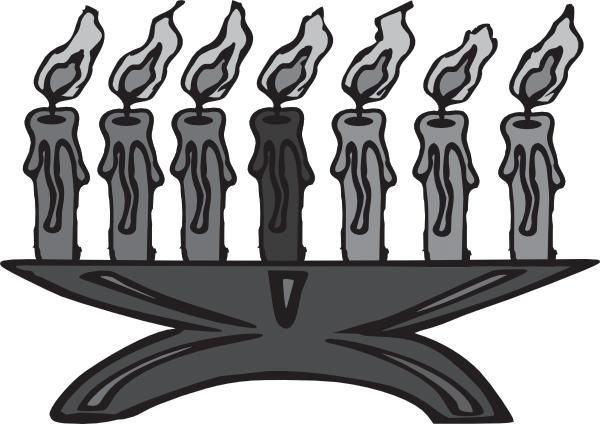
Muhindi/Corn
Represents the children and future of a family or community and are placed in front of each child
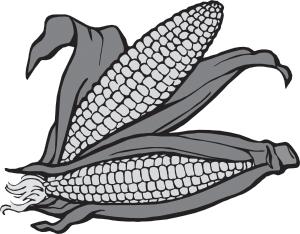
Mishumaa Saba/ Seven Candles
These also symbolize the seven principles and are red, green and the colors of the African flag
Zawandi/Gifts
These are given to the children to help them grow into better people, and should be educational and express a sense of heritage

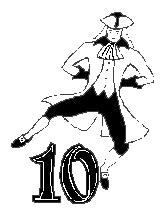
Meghan Ryan WASHBURN REVIEW
Winter holiday celebration fun and festivities are not limited to the Western, often Christian, countries celebrating Christmas. Asian countries have plenty of holiday inspired reasons to warm up during these bitter, cold months with family and booze. Traditional folklore and mythology of the region has had an historical impact on many of the holidays still celebrated today.
Many of these traditions are founded on farming practices from ancestors. These farmers relied greatly on the Lunar calendar because of the importance on the seasonal changes on crops. The Chinese Calendar relies on the lunar cycles as opposed to the western usage of the Gregorian, solar-based calendar. Because of this, traditional holidays, such as the Chinese New Year, will not land on the same day every year, but on the same day of the lunar cycle instead. China is not the only country that relies on this calendar. Many Asian countries such as Japan and Korea do as well.
The traditional Chinese holiday, the Dong Zhi Festival, will be Dec. 21 this year. This is the Winter Solstice festival and is also nicknamed the “Chinese Thanksgiving.” It is a day to celebrate with family gatherings and a feast. There
is ancestor worship performed on this day as well. It is believed that because this holiday is on the longest night of the year, yin and yang (balance and harmony) are most powerful at this time.
Japan wins the award for best December holiday with Bounenkai. Bounenkai is the “forget-the-year” party and may take place throughout December. This holiday entails drinking lots of alcohol with friends and co-workers and attempting to forget the troubles of the past year by becoming drunk.

The most important winter holiday in eastern Asia is the Chinese New Year. Also known as the spring festival, it marks the end of the winter season. This year the Chinese New Year will begin on Feb. 14 2010. It will be a year of the tiger. The celebration is not limited to only China, but is practiced throughout Asia including Japan and Korea.
The Chinese New Year festivities will last a total of 15 days, with each day emphasizing different aspects of their
lives such as family and prayer. The first day of the festival starts with a bang, literally, as fireworks are set off as a tradition. This originally started to scare away evil spirits with the loud, exploding original fireworks made of gunpowder filled bamboo pieces wrapped in red paper. The twoweek-long celebration includes a night parade, sporting events, visits to families and prayers to the heavens. One of the many traditions that accompany this event is the red envelope. The red envelope may be given from married couples or the elderly to unmarried juniors and children. Often, it may include even amounts of money for good luck.
While there are many religious groups such as Shinto, Christianity, Islam and Hinduism in Asia; Buddhism, including Taoism and Confucianism, has a very large following in east Asia and also celebrates various holidays during the winter.
Although less than 1 percent of China and Japan are practicing Christians, Christmas is still celebrated on Dec. 25
by some. It is not a public holiday, but it has grown in popularity because of the interests in Western culture.
The festival Ta Chiu will be celebrated in Hong Kong this year on Dec. 27. This celebration is generally limited only to Hong Kong, but it is sometimes practiced in parts of China. This is a Taoist festival celebrating renewal and peace. The people call upon their ancestors and gods in order to rejuvenate their lives and strive for a wonderful new year. After the celebration, all of the names of the townspeople are written down and burned. The smoke from this burning is thought to carry all of the names up to the heavens so that the people will be remembered by the gods.
Jan. 11 will also be another important religious holiday in Asia. The Laba Festival is a Buddhist celebration. The festival celebrates the date of Gautama Buddha’s enlightenment at thirtyfive years of age. It is tradition for all Buddhists to read the scriptures during this Laba festival. The culinary custom is to eat Laba congee, a dish made of fruits and mixed grains, on this day. This festival is especially important in China which has the most Buddhist followers than any other country in the world.

Meghan Ryan is a political science/German major. Reach her at meghan.ryan@ washburn.edu.
Christmas for Some
Bounenkai All December December 25 Ta Chiu December 27 Laba Festival January 11
Dong Zhi Festival December 21
Chinese New Year February 14


Wishing Happy Holidays from us to you
From the dedicated staff at the Washburn Review



